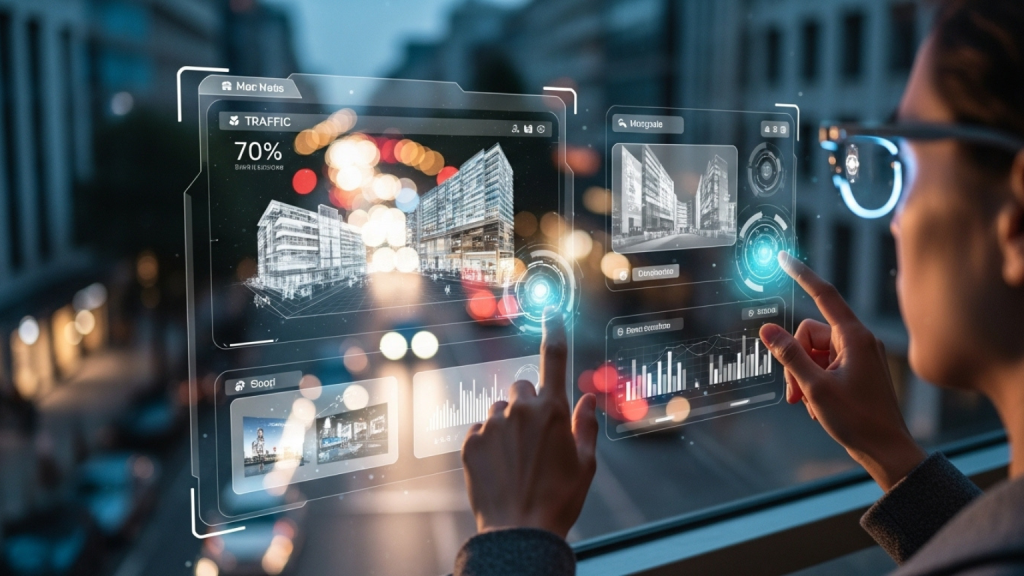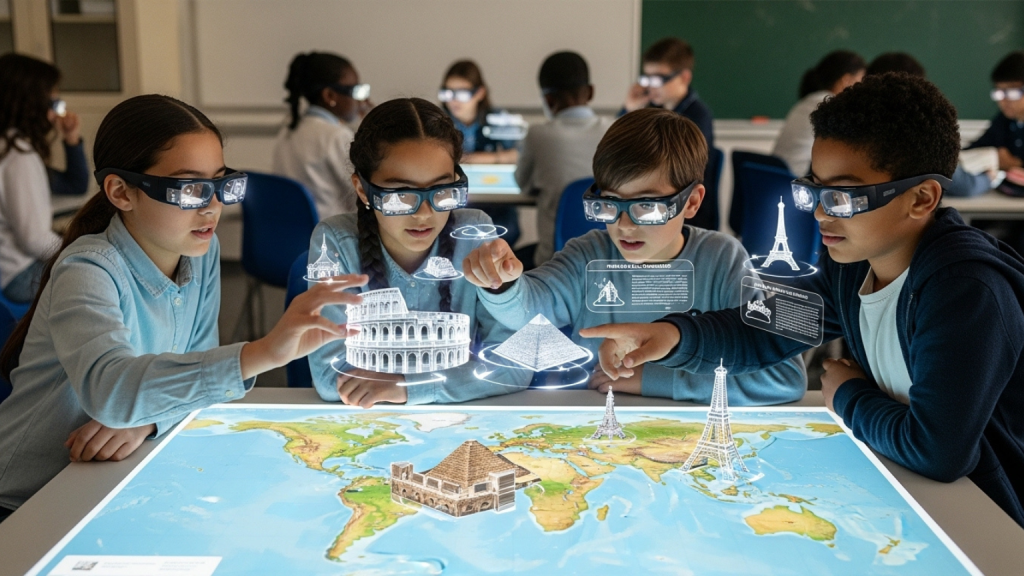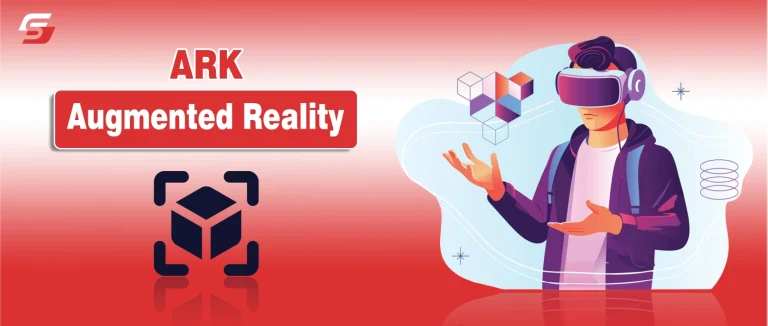If someone had told you just four years ago that you could feel yourself in the places you’ve never been, you probably wouldn’t believe it. But ARK augmented makes it possible through advanced technology.
The ARK (Augmented Reality Kiosk) system, created by the team at the Computer Graphics Centre in Portugal. They represent a major step forward in immersive technology and prove that you don’t need high-end headsets to enjoy powerful AR experiences.
If you’re curious about what ARK is, how it started, and how it could shape the future, this blog is for you.
What is ARK Augmented Reality?

ARK Augmented Reality is a bridge between the digital and real worlds. It is designed to make everyday experiences feel alive and real. Today, over 1.03 billion people use AR globally (Statista), and ARK adds to this growth by offering an immersive experience. When you use ARK, you’re not just looking at a screen; you’re watching digital elements appear right in front of you. It seems like they’re part of your surroundings.
For example, when you point your phone at something, it shows you more details than what your eyes can see. You look at a product, and your screen instantly displays details, colors, or a short animation that explains how it works. This is what Ark Augmented Reality does.
The Technical Foundation of ARk
Let’s take a look at the technology that makes ARK work and bring digital experiences to life.
| Aspect | What It Means | Why It Matters |
| AR Engine | The core software that powers ARK’s augmented reality. | It makes virtual objects appear seamlessly in the real world. |
| 3D Modeling & Graphics | Detailed digital designs and animations. | Helps ARK visuals look realistic and interactive. |
| Sensors & Cameras | Devices that detect movement, position, and surroundings. | They allow ARK to understand your environment accurately. |
| Cloud Computing | Online servers store data and process heavy tasks. | Ensures ARK runs smoothly without slowing down your device. |
| AI & Machine Learning | Intelligent algorithms that learn and adapt. | Makes ARK smarter, predicting your actions and enhancing experiences. |
| User Interface (UI) | The visual and interactive layer you touch or see. | Keeps ARK easy and fun to use for everyone. |
History and Evolution of ARK
ARK started as a small experiment to blend the digital world with reality. But over the years, it has grown into something that feels magical. Imagine a tool that lets you interact with your environment in ways you never thought possible.
Here’s a quick look at its journey:
- Humble beginnings: ARK started as a concept, exploring simple augmented overlays on real-world objects.
- Early experiments: Developers tested ARK in gaming, education, and retail, learning what worked and what didn’t.
- Technological leaps: As AR tech advanced, ARK incorporated smarter tracking, richer visuals, and more immersive experiences.
- Wider adoption: Today, ARK is part of everyday digital experiences, making interactions more intuitive and engaging.
Applications of ARK
ARK is changing how we interact with digital content. Businesses, educators, and creators use it daily. It enhances learning, marketing, and entertainment. This approach makes experiences more interactive and engaging.
1. Metaverse
ARK connects virtual worlds with reality in the form of the metaverse. Now, users can explore, create, and interact naturally. ARK makes avatars and digital spaces feel real. Anyone can attend events, meet friends, or collaborate professionally. It supports immersive experiences without complicated setups.
2. Gaming Simulation

With ARK Virtual objects appear in your actual environment. Players can move, touch, and interact with them. It helps train skills, test strategies, or just have fun. Augmented reality ARK games are more immersive than screens alone. Developers use it to create adventures that feel alive. Similarly, players enjoy realistic interactions and dynamic challenges.
3. Mixed Reality Systems
ARK combines cameras, sensors, and AI to merge real and virtual worlds. It tracks your environment and overlays digital objects naturally. You can manipulate, move, or interact with them as if they were real. Mixed reality helps training, design, and teamwork by showing instructions, models, or data in context.
Comparing ARK to Contemporary AR Solutions
| Feature | ARK | AR Solutions | Why It Stands Out |
| Ease of Use | Simple interface, intuitive controls. | Some require technical knowledge. | ARK is easy for beginners and pros alike. |
| Immersion | Highly interactive, realistic overlays. | Often basic or less detailed. | ARK feels more engaging and natural. |
| Compatibility | Works on most devices and platforms. | Some support limited devices. | ARK reaches more users seamlessly. |
| Speed & Performance | Smooth, responsive interactions. | It can lag on some devices. | ARK delivers a faster, smoother experience. |
| Customization | Flexible, adaptable to different needs. | Limited options in many AR tools. | ARK allows creative, personalized experiences. |
| AI Integration | Learns and adapts to user behavior. | Minimal AI in most AR apps. | ARK feels smarter and more intuitive. |
| Support & Updates | Frequent updates, strong customer support. | Updates are slower or irregular. | ARK keeps improving and is reliable. |
How ARK AR is Transforming User Experience in Different Industries

- Wearable ARK AR technology: Wearable AR puts digital information right in front of your eyes and makes tasks easier and faster. Everything becomes more interactive, whether it’s workers on the job, athletes training, or everyday users.
- Architecture and urban planning: ARK AR helps architects and planners see designs come to life in real spaces. City layouts, building impacts, and project plans can be visualized instantly, giving teams a clear picture before construction begins.
- Education: Learning becomes more engaging when students can interact with lessons directly. Complex topics like science, history, and math come to life through immersive AR experiences. Students remember better because they aren’t just reading they’re seeing and exploring in real time.
- Retail & marketing: Shoppers can try products virtually before they buy. It makes their experience more confident and fun. Brands can create interactive campaigns that really catch attention. This not only attracts customers but also simplifies decision-making and boosts sales naturally.
- Entertainment & streaming: Games, shows, and videos become richer with ARK AR. It allows viewers to engage in ways that feel personal. Storytelling feels more immersive, and content becomes memorable because people can interact rather than just watch.
AR / VR / Mixed Reality
| Technology | What It Is | How ARK Uses It |
| Augmented Reality (AR) | Adds digital elements to the real world through your device. | ARK overlays interactive graphics on your surroundings for learning, shopping, and gaming. |
| Virtual Reality (VR) | Creates a fully digital environment you can explore. | ARK immerses users in virtual worlds for training, games, and storytelling. |
| Mixed Reality (MR) | Combines real and virtual worlds interactively. | ARK blends physical and digital objects for realistic simulations and creative projects. |
Benefits And Limitations of Implementing ARK AR in Business Operations
Benefits of Implementing Ark AR
- Engaging Customers: ARK AR creates interactive experiences that grab attention and keep customers interested.
- Immersive Product Demos: Businesses can showcase products in 3D, letting customers see them realistically.
- Better Employee Training: AR simulations let employees practice tasks safely and effectively.
- Boosts Brand Image: Using AR shows innovation and modernizes how people view your business.
- Data Insights: ARK AR can collect and analyze user interactions to improve business decisions.
- Cost Efficiency: It reduces expenses in prototyping, testing, and training processes.
Limitations of Implementing Ark AR
- High Costs: Implementing AR requires investment in hardware, software, and updates.
- Technical Expertise Needed: Businesses need skilled staff to manage and maintain AR systems.
- Device Compatibility: Older devices may struggle or fail to run AR experiences.
- Potential Distraction: If not used well, AR can divert focus from key business goals.
- User Fatigue: Prolonged AR use may cause discomfort or tiredness for users.
Ark Augmented Immersive Future
The ARK Augmented Immersive Future refers to the next stage of digital experiences where ARK (Augmented Reality Kit) blends the real and virtual worlds seamlessly. In this future,
- Digital content becomes interactive and feels part of the real environment.
- Users can engage with objects, spaces, and information as if they are physically present.
- Experiences span gaming, education, retail, and everyday tasks, making them more engaging and memorable.
- AI, 3D graphics, and advanced sensors work together to make interactions smooth and intuitive.
Final Thoughts
ARK is a bridge between the digital and real worlds. It’s transforming how we play, learn, shop, and interact every day. By making experiences immersive, intuitive, and personal, ARK is shaping a future where digital feels real. ARK is opening doors to memorable moments, fun, and truly magical, whether you’re exploring new games, learning something exciting, or engaging with brands.
If you’re interested, you can also learn about other AI topics, such as the best AI stocks to buy now.
Frequently Asked Questions
ARK is a platform that blends digital content with the real world to create interactive experiences.
It makes interactions more immersive, allowing users to engage with digital objects as if they were real.
Gaming, education, retail, healthcare, and marketing all use ARK for interactive experiences.
Yes, AI helps ARK track environments, predict user actions, and create smarter interactions.
ARK aims to make digital experiences more personal, immersive, and emotionally engaging for everyone.
Absolutely, ARK enhances education and training by creating interactive, real-world simulations.











